Explore Tokushima - Japan Travel, Asia
Tucked away in the center of Shikoku Island, Japan, is Tokushima, a hidden treasure just waiting to be explored. Known for its vibrant festivals, stunning natural landscapes, and rich cultural heritage, this city offers a unique blend of traditional and modern attractions. Tokushima has something to offer everyone, regardless of your interests—foodies, history buffs, or adventure seekers alike. Navigating all the notable highlights of this enchanting destination will ensure you make the most of your visit.
Craving an exceptional Japan adventure? Explore our handpicked premium tours here for the ultimate experience.
Population: Approximately 728,000 in 2019.
Economy: Tokushima’s economy is dominated by 3 major industries, which are agriculture, forestry and fisheries. The region also is Japan’s largest supplier of cauliflower and lotus roots.
Landmarks: Famous for the Awa Odori Kaikan, Tokushima Castle Museum, and Naruto Whirlpools.
Japan
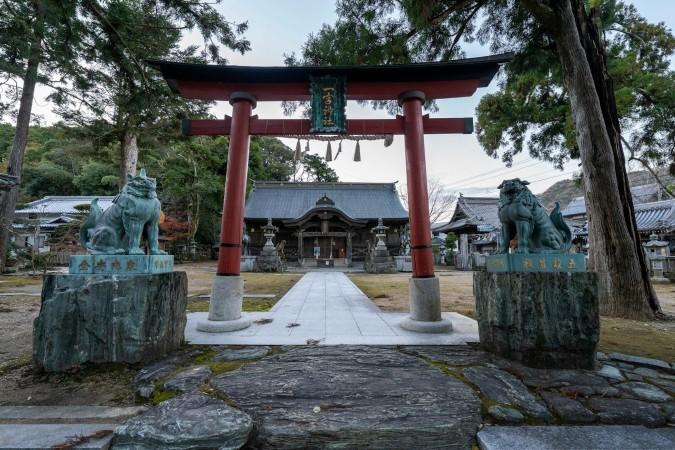
Overview of Tokushima
History & Cultural Influence
Tokushima’s history blends effortlessly between ancient traditions and modern influences. Founded in the 16th century, the city played a significant role during the Edo period as a hub for indigo dyeing. This rich past is still evident today, with many historical sites and cultural practices preserved for visitors to explore. One of the most notable landmarks is the Tokushima Castle Museum, which offers a glimpse into the city’s feudal past. The museum, built in the remains of Tokushima Castle, features displays and artifacts that demonstrate the development, together with the well-preserved culture of the city over time.
Interaction with The Locals
Tokushima offers a charming blend of urban and rural living to both its dwellers and visitors. The citizens of Tokushima are known for their warm hospitality and strong sense of community. They take pride in their rich cultural heritage, especially their famous Awa Odori dance festival. Both in bustling city centers or tranquil countryside, the people of Tokushima embody a harmonious balance of tradition and modernity.
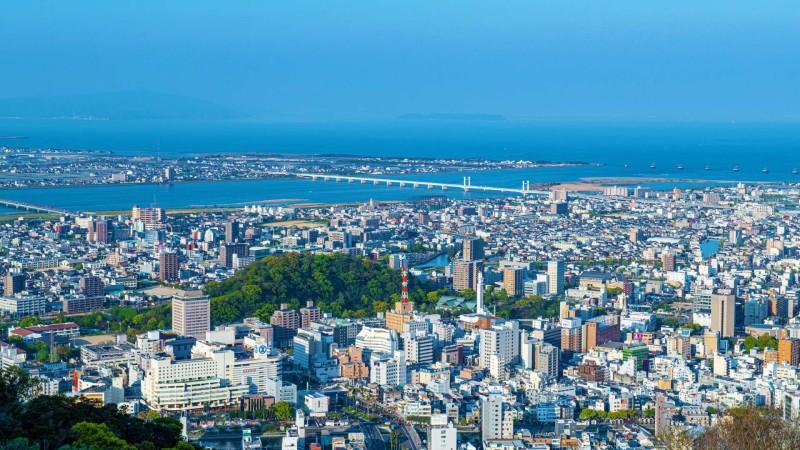
Tokushima-Shi, Tokushima Prefecture, Japan - © Facts
Top Attractions in Tokushima
Tokushima boasts a variety of attractions that cater to diverse interests. From historical buildings to natural wonders, you will find a lot of exciting things to discover at every turn.
- Awa Odori Kaikan: The Awa Odori Kaikan is a cultural center dedicated to Tokushima’s famous Awa Odori dance festival. Here, you can enjoy daily performances of this traditional dance, which is known for its lively rhythms and vibrant costumes. The center also features exhibitions on the history of Awa Odori and offers workshops where visitors can learn the dance themselves.
- Tokushima Castle Museum: Tokushima Castle, a historic site located in the heart of Tokushima city, offers insights into the region’s feudal past. The castle’s reconstructed main keep houses a museum with exhibits on local history and samurai culture. The nearby park is a nice place to take a leisurely walk, especially when the cherry blossoms are in bloom.
- Naruto Whirlpools: The Naruto Whirlpools are a stunning natural phenomenon visible in the Naruto Strait between Shikoku and Awaji Island. These swirling whirlpools are created by the powerful tidal currents and can be observed from special sightseeing boats or the Naruto Bridge. The best time to witness these dramatic whirlpools is during peak tidal changes, providing a breathtaking and memorable experience.
- Ryozenji Temple: Ryozenji Temple is the first stop on the Shikoku Pilgrimage, a historic route with 88 temples. This temple is known for its serene atmosphere and beautiful gardens. Visitors can participate in traditional Buddhist practices, such as meditation and prayer, and explore the temple’s historic architecture.
- Mount Bizan: Offering panoramic views of Tokushima city and its surroundings, Mount Bizan is a favorite spot for both casual visitors and avid hikers. Accessible via a scenic cable car ride, the summit features walking trails and observation decks that showcase the city’s skyline and the beautiful Seto Inland Sea. In spring and autumn, the area becomes particularly picturesque with blooming flowers and colorful foliage.
- Otsuka Museum of Art: The Otsuka Museum of Art, Japan’s largest art museum, is renowned for its extensive collection of reproductions of Western masterpieces. The museum’s unique approach allows visitors to experience famous works by artists like Van Gogh and Monet in life-sized formats. Its vast collection and immersive exhibits make it a fascinating destination for art lovers.
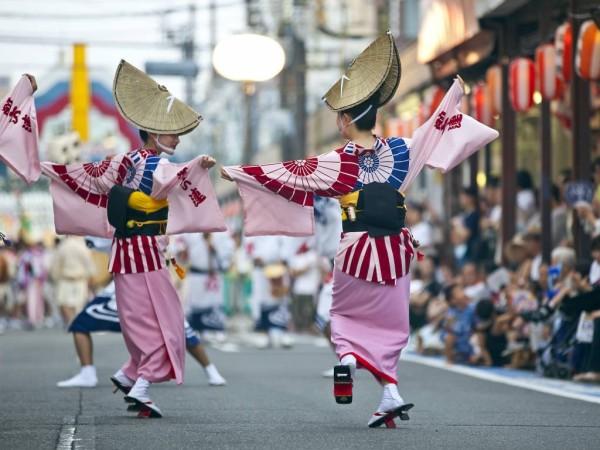
Awa Odori dance - © Japan Tourism
Must-Try Dishes in Tokushima
Tokushima’s cuisine is a delightful journey for foodies around the world. Give these must-try local dishes a taste and you'll get a true taste of Tokushima’s culinary diversity and richness. Each dish offers unique flavors and stories, contributing to a memorable culinary experience.
- Tokushima Ramen: A rich and hearty noodle soup, Tokushima Ramen is distinguished by its soy sauce-based broth, topped with pork belly, raw egg, and green onions. It's a comforting dish perfect for any meal.
- Sudachi Citrus: This small, green citrus fruit is a local specialty. Often used as a seasoning, it adds a tangy and refreshing flavor to dishes and beverages, including soba noodles, fish, and cocktails.
- Naruto Kintoki Sweet Potatoes: These sweet potatoes are a beloved snack in Tokushima. They are often enjoyed baked or candied and are known for their sweet, rich flavor and creamy texture.
- Awa Odori Chicken: Named after the famous Awa Odori dance, this dish features locally raised chicken, known for its tender and juicy meat. It is often grilled or fried and served with various dipping sauces.
- Iya Soba: A specialty of the Iya Valley, Iya Soba features buckwheat noodles served either hot or cold, often accompanied by a simple dipping sauce or in a light broth with seasonal vegetables.
- Tarai Udon: This dish consists of thick, chewy udon noodles served in a large wooden tub (tarai) with a hot, flavorful dipping broth. It is a communal dish, perfect for sharing with friends and family.
- Kumquat Sweets: Tokushima is also famous for its kumquats, which are used in a variety of sweets and desserts. Candied kumquats and kumquat jellies are popular treats that offer a sweet and tangy flavor.
- Sanuki Udon: Although originating from nearby Kagawa Prefecture, Sanuki Udon is widely enjoyed in Tokushima. These firm, chewy noodles are typically served with a light soy-based broth and topped with green onions and tempura.
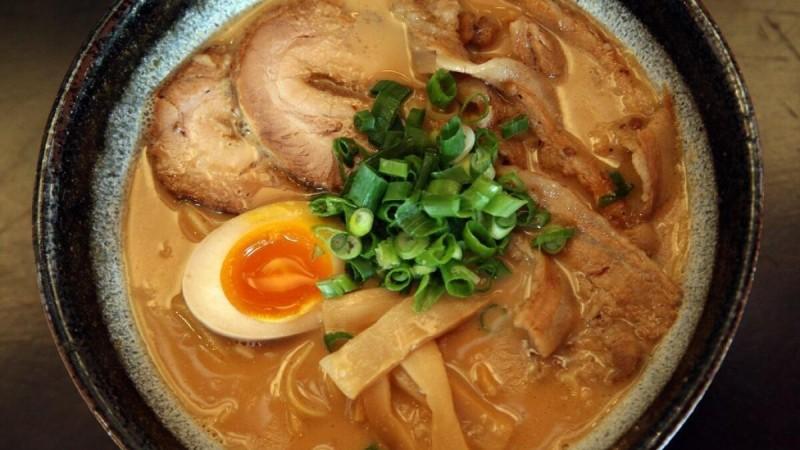
Tokushima Ramen - © Los Angeles Times
Festivals & Local Celebrations
Tokushima is vibrant with festivals and local celebrations that offer a glimpse into its rich cultural heritage. Each offers a unique experience, filled with music, dance, and the warmth of the local community.
Awa Odori Festival
Held every August, the Awa Odori Festival is Tokushima's most famous event and one of Japan's largest dance festivals. It dates back over 400 years and attracts more than a million visitors each year. Thousands of dancers in traditional costumes perform the vivacious Awa Odori dance around the streets as part of the event. Accompanied by traditional music played on shamisen, taiko drums, and flutes, the energetic and rhythmic dance creates a festive and electric atmosphere. Visitors are encouraged to join in the dance, and there are numerous food stalls, souvenir shops, and performances to enjoy throughout the city.
Naruto Kintoki Festival
Celebrating the harvest of the famous Naruto Kintoki sweet potatoes, this festival takes place in the autumn. The event includes parades, traditional music and dance performances, and an array of food stalls offering various sweet potato dishes. Highlights of the festival include sweet potato digging activities, cooking demonstrations, and contests where locals and visitors can showcase their culinary skills using Naruto Kintoki. It's a fun and family-friendly event that not only celebrates local agriculture but also fosters community spirit.
Hina Doll Festival
In March, Tokushima celebrates the Hina Doll Festival, also known as Girls' Day. This festival features the display of Hina dolls, which are intricately crafted and dressed in traditional Heian-period clothing. The dolls stand in for the emperor, empress, and their court and are set on a tiered stage. The festival also includes traditional music and dance performances, tea ceremonies, and workshops where visitors can learn about the art of doll making. It’s a cultural celebration that highlights the importance of family and the wish for health and happiness for young girls.
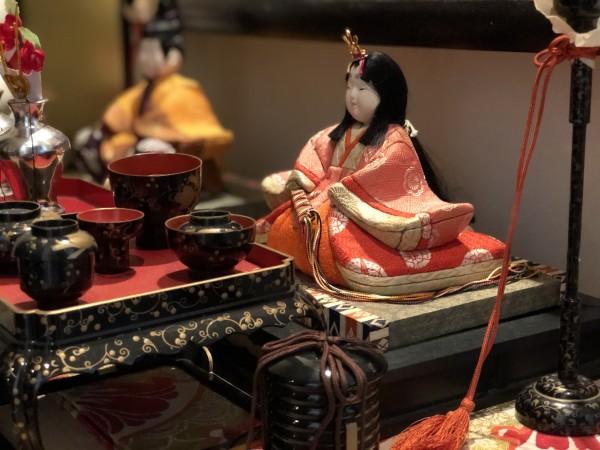
Hina Doll Festival - © Japan Tourism
What to Do in Tokushima
- Hiking Mount Bizan: Mount Bizan is perfect for hiking enthusiasts. The trails offer different difficulty levels, and the summit provides panoramic views of Tokushima city and its surroundings.
- Naruto Whirlpools Boat Tours: Experience the power and beauty of the Naruto Whirlpools up close with a boat tour. These tours give you a unique perspective on this natural wonder, allowing you to see the whirlpools' formation and strength.
- Traditional Craft Workshops: Take part in practical activities such as the ancient Tokushima technique of indigo dyeing. You have a fantastic opportunity to learn about and make your own original mementos with these classes.
- Tokushima Countryside Cycling: Rent a bicycle and explore the scenic countryside of Tokushima. The routes take you through picturesque landscapes, charming villages, and past historical sites, offering a peaceful and immersive experience.
Shopping in Tokushima
- Tokushima Station Market: Located near the main train station, this market is a great place to find fresh produce, local snacks, and handmade crafts. It’s an excellent spot to pick up souvenirs and taste local flavors.
- Awa Odori Kaikan Souvenir Shop: After enjoying the Awa Odori performances, visit the souvenir shop at Awa Odori Kaikan. It offers a variety of traditional crafts, local food products, and unique gifts related to the Awa Odori Festival.
- Indigo Dyed Goods: Tokushima is famous for its indigo dyeing, known as "Aizome." Shops across the city sell beautifully dyed fabrics, clothing, and accessories that make for special souvenirs.
- Shopping Malls and Department Stores: For a more modern shopping experience, head to one of Tokushima’s shopping malls or department stores. They offer a wide range of products, from fashion and electronics to cosmetics and home goods.
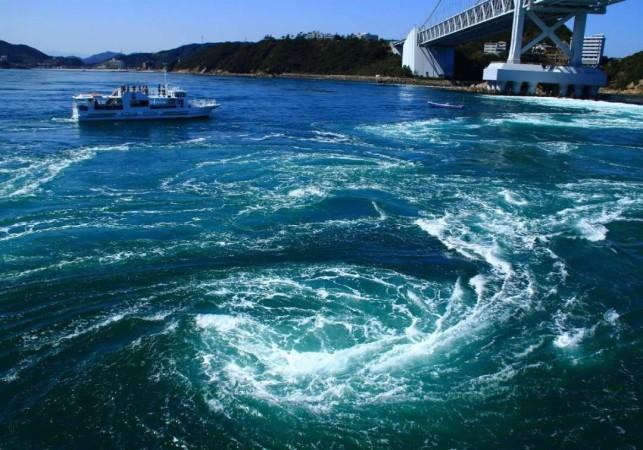
Naruto Whirlpools - © Japan Tourism
Weather in Tokushima: Best Time to Visit
Spring in Tokushima
- Weather: Spring in Tokushima is mild and pleasant, with temperatures ranging from 10°C to 20°C (50°F to 68°F). Cherry blossoms bloom around late March to early April, adding a picturesque touch to the landscape.
- Tourism Trend: Spring is ideal for outdoor activities like hiking in Mount Bizan and enjoying the blooming cherry blossoms. It’s also a popular time for festivals such as the Hina Doll Festival, where visitors can explore traditional crafts and local customs.
Summer in Tokushima
- Weather: Summer in Tokushima is warm and humid, with temperatures often exceeding 30°C (86°F). It is also the season for frequent rain showers and typhoons.
- Tourism Trend: Despite the heat, summer is vibrant with festivals, notably the Awa Odori Festival in August, which attracts numerous tourists. This is the perfect season for experiencing local culture through lively dance and outdoor celebrations. The warm weather also makes it a good time for exploring coastal areas and enjoying water-based activities.
Autumn in Tokushima
- Weather: Autumn brings cooler temperatures, ranging from 15°C to 25°C (59°F to 77°F). The weather is generally crisp and clear, with less humidity and a chance to witness beautiful fall foliage.
- Tourism Trend: This is a great time for scenic drives and hikes, particularly in areas like the Iya Valley, where the fall colors create a stunning backdrop. The Naruto Kintoki Festival celebrates the harvest, offering a taste of local agriculture and seasonal treats.
Want to know about Obuse? Check out our insights here and see why it's worth a visit.
Winter in Tokushima
- Weather: Winters in Tokushima are relatively mild compared to other regions, with temperatures between 5°C and 10°C (41°F to 50°F). Snowfall is rare, but the cool weather provides a refreshing change.
- Tourism Trend: Winter is perfect for enjoying hot springs at onsen resorts and exploring Tokushima’s indoor attractions. The quieter atmosphere is ideal for a relaxing getaway, and the cooler temperatures make it a good time for cozy indoor activities and cultural experiences.
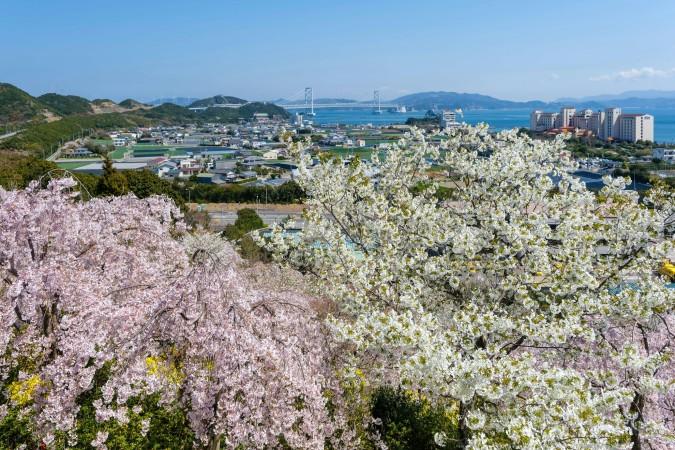
Spring in Tokushima - © Terumi Tokino
Essential Travel Information
Getting Around Tokushima
Navigating Tokushima is stress-free with various transportation options available that suit your every need.
- Trains and Buses: Tokushima has an efficient public transportation system with trains and buses connecting major attractions and towns. The JR Tokushima Line is the main railway line, and local buses serve urban and rural areas.
- Rental Cars: For more flexibility, consider renting a car. This is especially useful for exploring remote areas like the Iya Valley. Rental car services are available at Tokushima Airport and major train stations.
- Bicycles: Cycling is a popular way to explore Tokushima, particularly in the scenic countryside. Many rental shops offer bicycles for a day or longer periods.
- Taxis: In cities, taxis are widely accessible and may be reserved ahead of time or called on the street. They provide a practical and cozy mode of transportation, particularly for short distances.
- Ferries: Ferries operate between Tokushima and other parts of Shikoku, as well as to the nearby Awaji Island. They provide a scenic and enjoyable way to travel.
Looking for more adventures? Dive into Hakone, another famous destination in Japan, with our article here.
ATM & Banking Services
Handling your finances while traveling is crucial, and Tokushima provides several convenient banking and ATM services. ATMs are widely accessible at major train stations, convenience stores, and shopping malls, with many accepting foreign credit and debit cards for easy cash withdrawals. Currency exchange services are available at major hotels, airports, and some banks, though better rates might be found at local branches or exchange offices. Most businesses in Tokushima accept major credit and debit cards, but it’s wise to carry some cash for smaller shops and rural areas where card payment might not be available.
Where to Stay in Tokushima
Tokushima provides a variety of accommodation choices to suit different preferences and budgets.
- Hotels: Hotels in Tokushima range in price from luxurious to affordable. Major hotel chains and boutique hotels provide comfortable stays with amenities like Wi-Fi, dining options, and concierge services. Popular areas to stay include near Tokushima Station and in the city center.
- Ryokan (Traditional Inns): Experience traditional Japanese hospitality at a ryokan. These inns offer tatami-matted rooms, futon bedding, and often feature onsen (hot springs). Staying at a ryokan provides a unique cultural experience and a chance to enjoy authentic Japanese cuisine.
- Capsule Hotels: A sleek and small lodging choice are capsule hotels. They provide small, private sleeping pods and are typically found in city centers. This type of accommodation is ideal for solo travelers looking for a convenient and budget-friendly stay.
- Onsen Resorts: In addition to ryokan, Tokushima onsen resorts are where you can relax in natural hot springs while enjoying beautiful scenic views. These resorts often provide a range of wellness and relaxation services.
Articles for you

Experience Aboard The RV Indochine II - A Mekong Cruise With Tweet World Travel
The RV Indochine II is a luxury river cruise ship, offering an unforgettable journey through many attractions along the Mekong River. Built in 2017, this upscale vessel combines colonial elegance with modern conveniences to create a comfortable yet stylish environment for its crew and passengers. The ship’s intimate size makes it ideal for those seeking a more personal cruising experience while exploring Vietnam and Cambodia rich culture, scenery, and heritage. Whether you're gazing at the landscape from your private balcony or enjoying authentic local cuisine, RV Indochine II promises an exotic adventure like no other.

Witness Stilt Fishing In Sri Lanka: An Eco-Tourism Experience
Sri Lanka, renowned for its stunning beaches and rich cultural heritage, harbors a unique tradition that has captivated travelers for centuries: stilt fishing. This ancient practice, passed down through generations of coastal communities, blends artistry with necessity, offering a glimpse into a way of life intimately connected to the island's coastal rhythms. Stilt fishing in Sri Lanka isn't merely a means to catch fish; it's a cultural emblem, embodying the resilience and ingenuity of Sri Lanka's fishing communities.

Make Your Trip Stress-Free With The Tweet Trip App
Embark on your next adventure with confidence by downloading the Tweet Trip App, available for both iOS and Android. This essential travel companion allows you to view your detailed itinerary, stay connected with your tour guide and fellow travelers, receive real-time updates, and provide feedback effortlessly. With features like in-app messaging, emergency assistance, and location sharing, the Tweet Trip App ensures you travel smarter, stay connected, and enjoy a seamless, worry-free journey. Get started today and make the most of your travel experience with Tweet World Travel.

Pedal Through Paradise: Unveiling Cambodia's Hidden Gems on Two Wheels
The gentle whir of bicycle wheels mingles with the distant chants of monks as you glide past emerald rice paddies stretching to the horizon. This is Cambodia - a sensory explosion waiting to be experienced on two wheels. At Tweet Tours, we believe there's no better way to immerse yourself in the Kingdom of Wonder than by bicycle.
Cambodia isn't just a destination; it's a living, breathing tapestry of ancient wonders, natural beauty, and vibrant culture. Our carefully crafted cycling tours take you beyond the typical tourist haunts, offering a unique perspective on this captivating country. Ready to clip in and discover the magic of Cambodia? Let's ride!

Trekking in the Himalayas: A Journey Through Nepal's Majestic Peaks
The Himalayas rise from the earth like colossal guardians, their snow-capped peaks piercing the sky in a display of nature's raw power and beauty. Nepal, nestled at the heart of this mountain range, serves as the gateway to some of the most breathtaking trekking experiences on the planet. Here, the air is crisp and thin, filled with the promise of adventure and the whispers of ancient tales.
With Tweet Tours, as you set foot on these hallowed trails, you're not just a traveler - you're a modern-day explorer, following in the footsteps of legendary mountaineers and age-old traders. Each step takes you further into a world where nature reigns supreme and human resilience is tested against the backdrop of some of the world's highest peaks.
From the moment your boots touch the ground in Kathmandu, you'll feel the pull of the mountains. The bustling streets of the capital, with their sensory overload of sights, sounds, and smells, soon give way to serene mountain paths where the only soundtrack is the crunch of gravel underfoot and the distant tinkling of yak bells.

Exploring Mui Ne's Wonders: Unique Attractions & Local Dishes
Nestled along the southeastern coast of Vietnam, Mui Ne emerges as a captivating gem, blending natural wonders with cultural richness. Renowned for its stunning landscapes and unique attractions, Mui Ne beckons travelers seeking both relaxation and adventure in equal measure. Mui Ne's renowned beach dunes, bustling fishing towns, and excellent local food await exploration at every turn.
The allure of Mui Ne lies not only in its pristine beaches and crystal-clear waters but also in its diverse range of activities catering to every traveler's whims. Whether you're drawn to thrilling water sports like kitesurfing and windsurfing on its dynamic shores or seeking tranquility amidst the picturesque Fairy Stream, Mui Ne promises an unforgettable journey filled with discovery.
